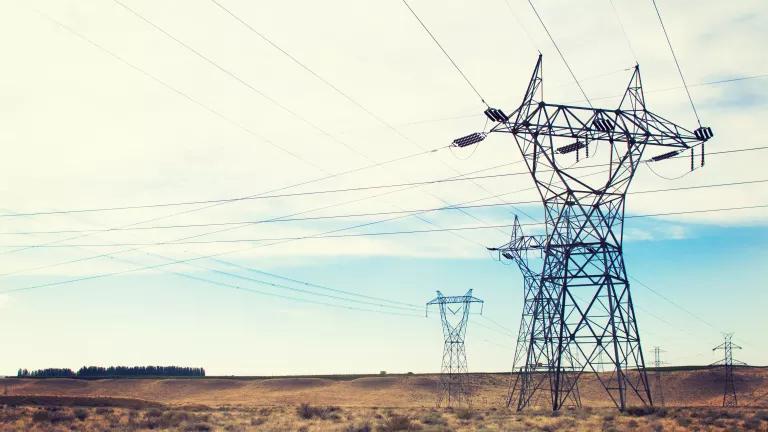
Late in May, tech giants Apple, Facebook and Google wrote to leaders of North Carolina's legislature urging them not to discontinue the state's landmark, job-growing, money-saving, carbon-cutting renewable energy and energy-efficiency standard. Now, another tech giant, Amazon, is voting with its feet in favor of clean energy in the Tar Heel state, by contracting with global renewables developer Iberdrola to build a 208-megawatt wind farm on our state's northeastern shoulder, in Perquimans and Pasquotank counties. It will be North Carolina's, and the Southeast's, first utility-scale wind farm. Hooray!
The wind farm is great news all around. It will cut the carbon pollution that fuels global warming, create good-paying jobs, improve the quality of the air our kids breathe and support rural communities by providing lease payments to farmers and increasing the tax bases of rural towns and counties. But the announcement tells a bigger story, too, about how smart government policies continue to drive improvements in wind power technology that not only lower clean-energy costs but also can make much of the previously wind-poor Southeast into a clean power powerhouse. That, in turn, can help us further cut our carbon emissions and aid states in cost-effectively complying with the EPA's Clean Power Plan to cut greenhouse gas pollution from the nation's power plants, along with all that other good stuff. In other words, this wind farm is a win all around.
Let me give you, first, a little more about our immediate good fortune here in North Carolina. The Amazon Wind Farm US East, as it's officially called, will come online by the end of 2016, employ 250 during construction, 10 in ongoing operations jobs, and will produce enough pollution-free electricity to power 61,000 American homes. It will also provide local farmers with annual lease payments of $6,000 a year per turbine, and pay more than a half a million dollars in property taxes in the first year of operations, with tax payments increasing after that.
Importantly, the wind farm will also help the power-hungry data center industry clean up its act. In 2013, that industry used a mind-blowing 91 billion kilowatt-hours of electricity, equivalent to the output of 34 large, coal-fired power plants and enough to power all the households in New York City twice over. By 2020, that number will likely shoot up by roughly 50 percent, the equivalent of 17 additional power plants. All of which means, the cleaner the power that supplies the nation's data centers, the better.
Amazon's wind farm is, in many ways, an important first step in our state. But, I hope, it's also the beginning of the story about how the Southeast, helped along by smart government policies like the now-expired federal Production Tax Credit for wind power and North Carolina's renewable energy standard, can become a wind power powerhouse in its own right. Demand spurred by government policies helped convince manufacturers and researchers to invest in the development of these improved technologies. Now thanks to new, taller turbine towers that are already commonly used in much of the world, as well as improved rotors and better digital tools, the Southeast has wind power to tap. According to recent U.S. Department of Energy numbers, for instance, Arkansas can meet 70 percent of its current electric needs with wind power alone, using just 5 percent of the wind-power potential that can be captured by 110-meter towers. Louisiana could generate close to 20 percent. Tennessee could meet 11 percent. New, 140-meter turbine towers, now used in Europe and likely to be deployed in the U.S. in five to 10 years, can open virtually all of the Southeast to the clean power of the wind.

While Amazon's wind farm isn't using those 110-meter turbine towers, technological advances, for sure, have made a difference. "When we started developing this project in 2009," explains Iberdrola spokesperson Paul Copleman, "the site likely would not have been viable with technology available at that time." Now, thanks to these breakthroughs, the Amazon wind farm's turbine towers will stand taller than recent U.S. averages, with longer blades. "That size, particularly the blade length, was a game changer for a site like this," Copleman says.
Amazon's new wind farm is a boon for our state, for the data center industry, and for everyone who enjoys cleaner air, higher employment, rural development and a more stable climate. Smart government policies have driven the investment and R&D that have made it possible. Stopping those policies now, just as the Southeast is finally poised to develop wind power, would be a step backward, not ahead.
Let's continue the policies that can bring so many clean power benefits to North Carolina and the whole of the Southeast.




